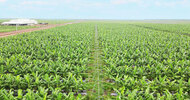Times of India | 12 April 2024
Over 10,000 hectares identified for tree plantation across 13 states under ‘green credit’ programme
NEW DELHI: Over 500 land parcels spanning 4,885 hectares — the size of nearly 6,000 football fields — across 10 states have been approved for tree plantation ever since the Green Credit Programme (GCP) kicked off in the country. These states, along with three others, have together identified over 10,000 hectares of land for the programme.
Madhya Pradesh has, so far, reported the highest 954 hectares of approved degraded forest land for plantation/greening exercises followed by Telangana (845 hectares), Chhattisgarh (713 hectares), Gujarat (595 hectares) and Assam (454 hectares).
Other five states where such land parcels have been approved by the administrator — Indian Council of Forestry Research and Education (ICFRE) — are Bihar, Rajasthan, Tamil Nadu, Maharashtra and Odisha. Land parcels have, so far, been identified by forest departments of 13 states.
As many as 14 public sector undertaking (PSUs) and other entities have been registered to do plantations on degraded forest land and eventually earn green credits. Individuals, industries and other public/private entities, including philanthropies and local bodies, can voluntarily participate in the GCP.
Underlining how the programme will nurture the entire ecosystem services, Union environment secretary Leena Nandan said, “GCP is envisaged independent of the carbon credit mechanism, as it intends to encourage other non-carbon environmental positive actions for benefits to local soil, water and ecosystems, and does not encompass only the carbon sequestration aspect of the areas where greening has successfully been carried out.”
Though the programme was launched six months ago to encourage environmentally friendly practices by people, the environment ministry notified the methodologies for calculation of credit generated in lieu of tree plantation on degraded land parcels, including scrub land, wasteland and catchment areas of rivers in every state and Union Territory in Feb.
“Based on the biodiversity of each degraded forest land block, tree species will be selected based on discussion with the relevant forest department, the entity which has selected the land and the ICFRE. Tree species selection will be strictly site relevant and such as to encourage assisted natural regeneration and indigenous species,” Nandan told TOI.
States have identified the land parcels for plantation amid certain concerns expressed by experts over implementation of GCP. “In my view decision to hand over degraded forest land for plantation activity to any private company is fraught with legal complications and may become a source of conflict between tribals communities and forest departments,” said S S Badhawan, retired Indian Forest Service officer and former principal chief conservator of forest, Jharkhand.
He said the GCP may be seen as an attempt by the government to dilute stakes of tribal communities over natural resources, where they are one of the biggest stakeholders.
Badhawan apprehended that most of forest land which may be identified by state forest departments will come from protected forests over which tribal communities have statutory rights under provisions of Indian Forest Act 1927.
He said, “In view of the legal position, the Govt of India, in 1990, issued instructions to all State Govts/UTs to form Joint Forest Management Committees (JFMC) and seek help of local tribal communities in regeneration of degraded forests... Since then these JFMCs have been taking active part in forest protection and plantation activity. Now question arises as to what will happen to the legal rights of local tribals over land identified for plantations.”
The environment secretary explained that the respective state forest departments will identify degraded forest land blocks with canopy density ratio of less than 0.4 for implementation of greening activities on degraded forest land.
She said, “All degraded forest land blocks made available by the State forest departments are to be under their administrative control and management and free of any encumbrances. These land parcels will be made available on the GCP Portal. Entities including individuals, private sector, philanthropies, local bodies etc. desirous of undertaking plantation for purpose of green credits will select the land parcel of their interest from the degraded land inventory made available for plantation on the GCP Portal and make payment to the Administrator through the Portal.
“The amount will be transferred to respective state forest department for undertaking tree plantation and monitoring/maintaining the same for a period of 10 years. Existing flora and fauna diversity of each degraded forest land block made available for plantation by the state forest department will be identified and details will provided on the GCP Portal.”
Spelling out other details, Nandan further said,” Depending on the terrain and agro-climatic conditions, there will be greening through shrubs and grasses as is relevant. Where existing root stock is available, only boundary fencing, closing of areas and other protection measures will be undertaken for naturally regenerating the bio-diversity. Green credits will be issued to the entities on completion of the greening activity in a period of two years."














